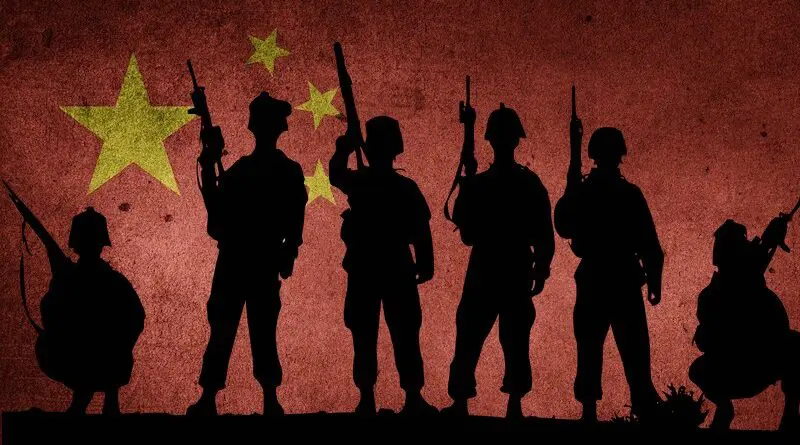Paul Goble

For more than a decade, China has been using its own private military companies (PMCs) to guard Chinese facilities abroad, preferring to use them rather than rely on protection from local firms or PMCs from other countries. On occasion, Beijing will employ PMCs to put pressure on governments in other countries (see EDM, March 25, 2021). Until now, it has always done so without much fanfare.
Chinese officials typically deny that PMCs play a role greater than merely defending Chinese interests. Beijing often chooses to call these entities by various other names to hide their true nature (Window on Eurasia, August 25, 2022, December 28, 2023). This approach has led Western analysts to stress the limited and defensive nature of Chinese PMCs in contrast to what they and others admit are the larger and more strategic actions of Russian and American PMCs (Voice of America, March 31, 2023; Sukhankin, “An Anatomy of the Chinese Private Security Contracting Industry,” January 3, 2023).
In the words of one Moscow commentator, Chinese PMCs have “come out of the shadows.” The analyst referred to a recent meeting in Beijing in December 2023 during which officials from the Chinese Foreign Ministry and officers of various Chinese security companies took part. Discussions during the event alluded to the broader role for these paramilitary forces in taking on a more assertive posture globally (Fondsk.ru, December 25, 2023).
The session in Beijing featured speakers who declared that China has no choice but to deploy even more PMCs around the world. They asserted that this is sorely needed as currently there are more than 47,000 Chinese companies employing 4.1 million people, including 1.6 million Chinese citizens, in some 190 countries. The meeting was followed by the publication of what can be described as a programmatic discussion of Chinese PMCs in the South China Morning Post (SCMP). The article suggested that Beijing plans to expand its use of PMCs to pursue broader political goals (SCMP, December 24, 2023). This public stance indicates that China feels that it can now use PMCs more openly due to the growth of Chinese power abroad and the declining influence of Russia and the United States. This, in turn, suggests that Chinese officials will deploy these entities more frequently and more broadly than in the past, allowing Beijing to defend its infrastructure on foreign soil and put additional political pressure on other countries.
These developments have attracted the attention of Central Asian countries that may become the targets of Beijing’s broader use of PMCs (Inbusiness.kz, December 25, 2023). Moscow is also keeping a close watch, as, in the past, it has seen Chinese PMCs as allies and helpmates. The Kremlin must now confront the very real possibility that these Chinese entities are becoming competitors or even active opponents to Russian PMCs (TASS; Kommersant, December 24, 2023;Vedomosti, December 25, 2023).
China’s recent activities and other powers’ reactions are the outgrowth of developments over the past five years. Mission creep on the part of Beijing has increasingly focused on protecting economic interests, leading those entities deployed to fulfill related objectives to become more involved in political issues. This has elevated the nervousness of outside powers regarding China’s increased willingness to flaunt its growing power. (On the emergence of these trends, see China Brief, May 15, 2020). The US reaction has been limited thus far. It will almost certainly intensify in the coming weeks, given rising tensions between Washington and Beijing over Taiwan, US concerns that Chinese PMCs may threaten American partners, and a growing interest in seeing how Chinese assertiveness may undermine Beijing’s cooperation with Moscow.
Central Asia and Africa represent the two areas where the role of Chinese PMCs appears likely to expand most rapidly in the near term (Sukhankin, “Chinese PSCs: Achievements, Prospects, and Future Endeavors,” November 20, 2023). In these two regions, some governments are weak. Outside groups like PMCs can play a major role at minimal cost, permitting those behind them to maintain a veil of deniability. (On Chinese moves in Central Asia, see EDM, December 7, 2021, and Window on Eurasia, February 15, 2022; on similar moves by Beijing in Africa, see Sukhankin, “The ‘Hybrid’ Role of Russian Mercenaries, PMCs and Irregulars in Moscow’s Scramble for Africa,” January 10, 2020, and EDM, June 29, 2021.) As highlighted in the December meeting, given the breadth of Chinese involvement globally, Beijing may use its PMCs in similar ways elsewhere as well—wherever and whenever it senses weakness on the part of host governments or their Western supporters.
In the past, Russian observers expressed confidence that China would move cautiously in using PMCs for any broader political goals, though they were open to the idea that such Chinese actions might benefit Moscow by generating widespread chaos (Ia-centr.ru, March 25, 2021). Western specialists have followed in their wake, assuming that China will invariably take the longer-term view and not take risks when it has reason to believe that history is moving in its direction.
This perspective contrasts sharply with Russia, whose leaders have become embroiled in numerous troubles due to overreach in places such as Afghanistan or Ukraine (Voice of America, March 31, 2023). Nevertheless, the words coming out of China regarding PMCs over the past month and Beijing’s actions on the ground suggest that China has decided to change course and that it has concluded now is an appropriate time to press forward and use PMCs in ways experts only a few years ago thought would happen in the distant future (Current Time TV, February 2, 2019).
If that proves to be the case, then Chinese PMCs with names few in the West even know may soon displace Russia’s Wagner Group as objects of primary geopolitical concern. The very public nature of Beijing’s actions suggests that this is highly likely. These entities may prove even more dangerous than Russian PMCs, especially because the rise and expanded use of Chinese PMCs has so often been downplayed until now.
No comments:
Post a Comment